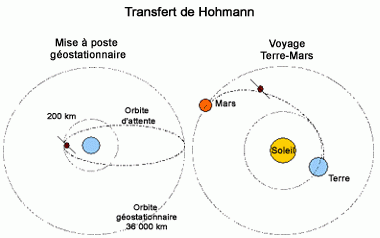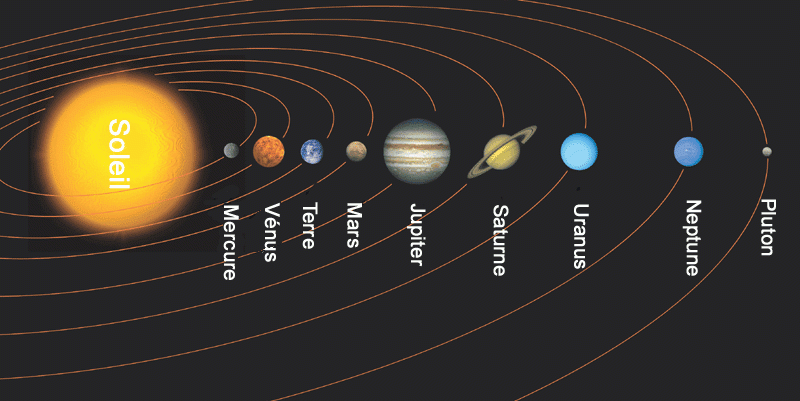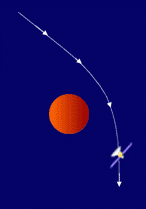How interplanetary trajectories work
Mars: at least 56 million kilometres from Earth.
Saturn: 1.2 billion kilometres.
Neptune: 4.3 billion kilometres.
How does a probe get to such distant planets?
Exploring planets, particularly those at the outer reaches of the solar system, poses a number of constraints. Chief among these are distance, energy and journey time.
On Earth, the shortest and most economical route between 2 points is a straight line. And all terrestrial vehicles use their own means of propulsion.
But no matter how far we go, the journeys we are used to making on Earth cannot prepare us for interplanetary space travel. Indeed, they can even lead us into error.
The laws of space are much more subtle and the technical constraints we face there call for quite different strategies.
Closest distances to the Sun :
Vénus : 107 400 000 km
Mercure : 45 900 000 km
Terre : 147 100 000 km
Mars : 207 000 000 km
Jupiter : 740 000 000 km
Saturne : 1 346 400 000 km
Uranus : 2 742 000 000 km
Neptune : 4 460 000 000 km
Pluton : 4 425 000 000 km
Escaping Earth
To send a probe to another planet, we have to define the right time to launch it towards its target.
Contrary to what we might think, it is not when the 2 planets are opposite each other. First, ascending vertically from Earth's surface requires a huge amount of energy. Second, all the bodies in the solar system are in motion relative to one another, so the target planet will not necessarily be in the right place when the probe intersects its trajectory.
To begin with, we therefore need to take the planets' relative motion into account when determining the launch window. The spacecraft is launched toward a point in space and then injected into a solar orbit to intersect that of the target planet at the right time to reach it.

Source : ESA
MARS EXPRESS' trajectory (ESA website)
Our planet orbits the Sun at a speed of 108,000 kilometres per hour. An object near the equator moves at a speed of 1,650 kph with respect to the centre of the Earth. Near the poles, its velocity is virtually zero.
When launching a spacecraft, it is therefore very important to takes advantag of the velocity imparted by the Earth’s rotation and by its revolution around the Sun.
This is why the launch site has a direct impact on the amount of energy required.
Word watch
Escape velocity
To escape the pull of Earth’s gravity, a probe needs to have sufficient momentum: the escape velocity is the minimum theoretical velocity that an object must reach at a given altitude to fly away from Earth. If the Earth had no atmosphere, a cannonball fired from the surface would need to be projected at a vertical velocity of 11.2 kilometres per second to prevent it falling back to Earth. In practice, the escape velocity imparted by the launcher to the probe is calculated with respect to the altitude at the injection point. At 36,000 km above Earth, it is only 4.3 kps.
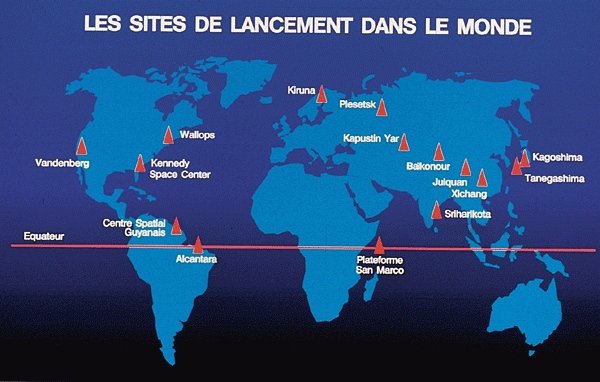
Credits : CNES
Using the laws of space
Once the probe has been propelled in the right direction, it may still have a long way to travel.
To achieve the momentum it needs, a probe relies on the laws of space. As it orbits around the Sun or other planets it encounters, it moves as a result of universal gravitation.
Interplanetary exploration therefore seeks to exploit the mutual attraction between objects in space to adjust a probe's trajectory and velocity.

The trajectory on the right includes the Venus flyby. On the left, the direct trajectory to Mercury, requiring a much more powerful launcher.
Animation: how gravity assist work (CNES)
Animation: a few missions' trajectories (ESA website)
Spacecraft may also be equipped with motors and thrusters, which are only fired occasionally to make minor corrections to their trajectory, orbital plane or attitude.
Cosmic billiards
A probe can modify its trajectory, velocity and even its inclination relative to the ecliptic plane, without expending any extra energy. It does so by exploiting a principle of the laws of universal gravitation called gravitational assistance.
As the spacecraft passes in the vicinity of a planet, it comes within its gravitational influence and is pulled toward the planet. As a result, its trajectory curves and it picks up speed. The probe swings behind the planet and then slows down again as it moves away. Although the probe’s outbound velocity is the same as its velocity on arrival, the planet transfers a part of its Sun-relative velocity to the probe during the swingby.
Animation : how gravity assist works
The change in velocity and deviation of the spacecraft’s trajectory depend on the mass of the planet chosen for the flyby, and on the flyby altitude and relative velocity. If the probe swings by the planet in its direction of motion about the Sun, it picks up speed. If the flyby is in the opposite direction, the probe loses speed.
The trajectory is obviously calculated very precisely so that the spacecraft does not collide with the planet during a flyby.
This gravity assist technique is used by most interplanetary missions. For example, the Voyager probe would never have made it to Saturn, Uranus and Neptune without a gravity assist from Jupiter. And the Galileo probe used the gravity of Jupiter’s moon Io to decelerate and go into Jovian orbit.
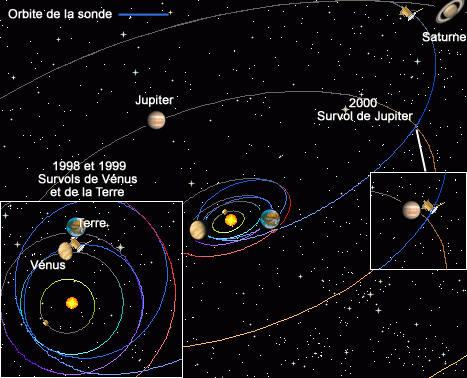
CASSINI-HUYGENS orbit (ESA website)
Did you know?
Transfer orbits for economy-class interplanetary travel
The most economical way to transfer from one circular orbit to another, in the same plane and direction of travel, is to describe a half-ellipse with one end at a tangent to the initial orbit and the other to the final orbit. This type of manoeuvre—called a Hohmann transfer—in theory only requires two bursts of thrust. Hohmann transfers are used to position geostationary satellites or to send spacecraft to Mars.
